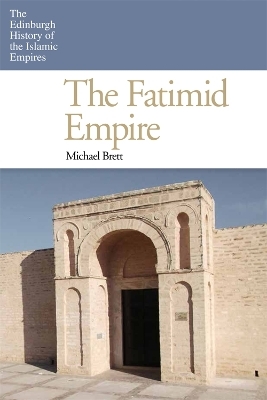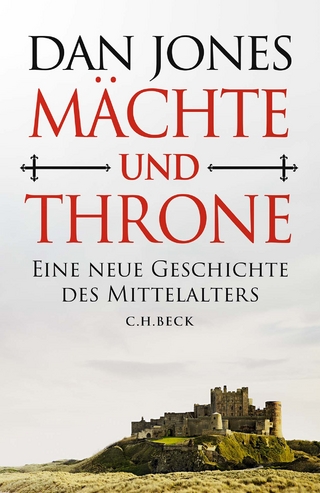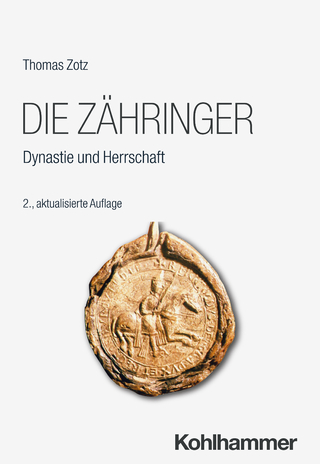
The Fatimid Empire
Seiten
2017
Edinburgh University Press (Verlag)
978-0-7486-4077-5 (ISBN)
Edinburgh University Press (Verlag)
978-0-7486-4077-5 (ISBN)
From the 10th century to the end of the 12th century, the Fatimid Empire played a central, yet controversial, role in the history of Islam. By relating it to the wider history of Islam, the Crusades and its theocratic counterparts in Byzantium and Western Europe, this book shows the full historical significance of the empire.
This is a new history showing the significance of the empire to Islam and the wider world. From the 10th century to the end of the 12th century, the Fatimid Empire played a central, yet controversial, role in the history of Islam. This definitive account combines the histories of Isma'ilism, North Africa and Egypt with that of the dynasty. By relating it to the wider history of Islam, the Crusades and its theocratic counterparts in Byzantium and Western Europe, Brett shows the full historical significance of the empire. Topics covered include: the work of Ibn Khaldun; the relationship of tribal to civilian economy and society; the formation and evolution of the dynastic state; the relationship of the dynastic state to economy and society; and, questions of cultural change, specifically Arabisation and Islamisation. It is a full narrative history of the Fatimid empire for students and academics of Islamic studies, Middle Eastern studies and history. It comes with an overarching emphasis on the three key themes studied on Islamic Studies courses: empire, authority and religion, and the interaction between them.
It covers everything from political, military and cultural events to the arts, learning and knowledge. It offers a sweeping geographic scope: follows the expansion of the empire into Asia, Africa and Europe. Confused about who's who? You can find lists of the rulers, dynasties and genealogies for quick reference. Helpful features for students include chronologies, timelines, glossaries, guides to further reading and boxed inserts with brief essays that give more detail about special events, key people and more.
This is a new history showing the significance of the empire to Islam and the wider world. From the 10th century to the end of the 12th century, the Fatimid Empire played a central, yet controversial, role in the history of Islam. This definitive account combines the histories of Isma'ilism, North Africa and Egypt with that of the dynasty. By relating it to the wider history of Islam, the Crusades and its theocratic counterparts in Byzantium and Western Europe, Brett shows the full historical significance of the empire. Topics covered include: the work of Ibn Khaldun; the relationship of tribal to civilian economy and society; the formation and evolution of the dynastic state; the relationship of the dynastic state to economy and society; and, questions of cultural change, specifically Arabisation and Islamisation. It is a full narrative history of the Fatimid empire for students and academics of Islamic studies, Middle Eastern studies and history. It comes with an overarching emphasis on the three key themes studied on Islamic Studies courses: empire, authority and religion, and the interaction between them.
It covers everything from political, military and cultural events to the arts, learning and knowledge. It offers a sweeping geographic scope: follows the expansion of the empire into Asia, Africa and Europe. Confused about who's who? You can find lists of the rulers, dynasties and genealogies for quick reference. Helpful features for students include chronologies, timelines, glossaries, guides to further reading and boxed inserts with brief essays that give more detail about special events, key people and more.
Michael Brett is Emeritus Reader in the History of North Africa, SOAS, University of London.
1. Introduction: The Fatimids in the perspective of the literature; 2. The Mahdi: Faith and the formation of the dynastic state, 874-947; 3. The Imam: Faith and the formation of the empire, 947-996; 4. The Caliph: Faith and government, 973-1045; 5. The crisis of empire, 1009-1074; 6. The restoration of the Caliph and the repudiation of the Imam, 1074-1131; 7. The demise of the Caliph, 1131-1171; 8. The Fatimid empire in comparative perspective.
| Erscheint lt. Verlag | 28.2.2017 |
|---|---|
| Zusatzinfo | 25 black and white illustrations, 2 black and white tables |
| Verlagsort | Edinburgh |
| Sprache | englisch |
| Maße | 156 x 234 mm |
| Gewicht | 392 g |
| Themenwelt | Geschichte ► Allgemeine Geschichte ► Mittelalter |
| Geisteswissenschaften ► Geschichte ► Regional- / Ländergeschichte | |
| ISBN-10 | 0-7486-4077-0 / 0748640770 |
| ISBN-13 | 978-0-7486-4077-5 / 9780748640775 |
| Zustand | Neuware |
| Informationen gemäß Produktsicherheitsverordnung (GPSR) | |
| Haben Sie eine Frage zum Produkt? |
Mehr entdecken
aus dem Bereich
aus dem Bereich
eine neue Geschichte des Mittelalters
Buch | Hardcover (2023)
C.H.Beck (Verlag)
38,00 €


